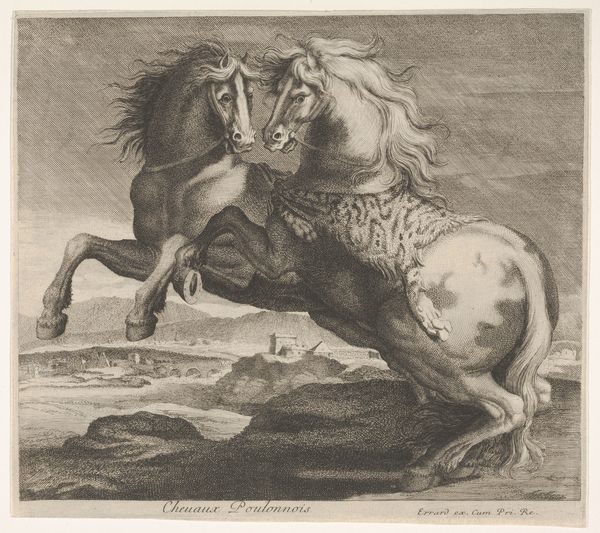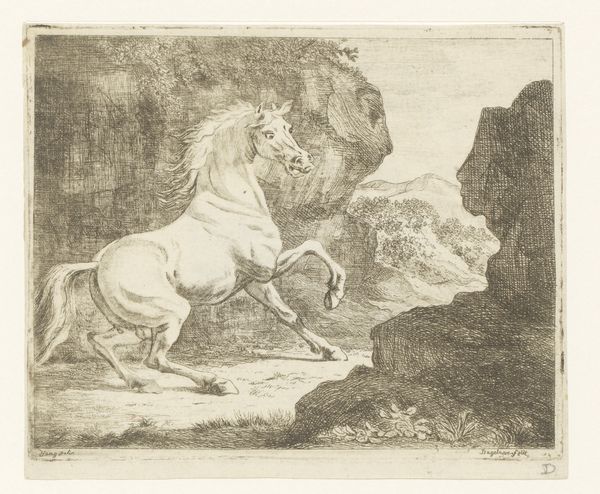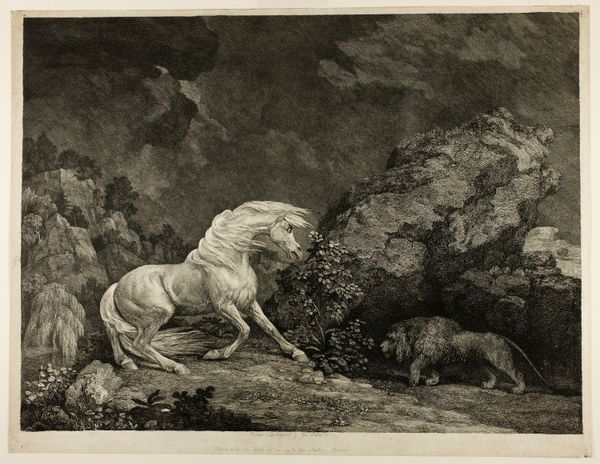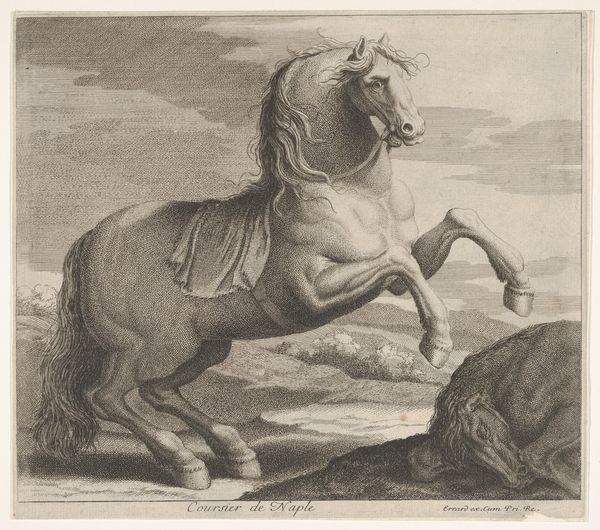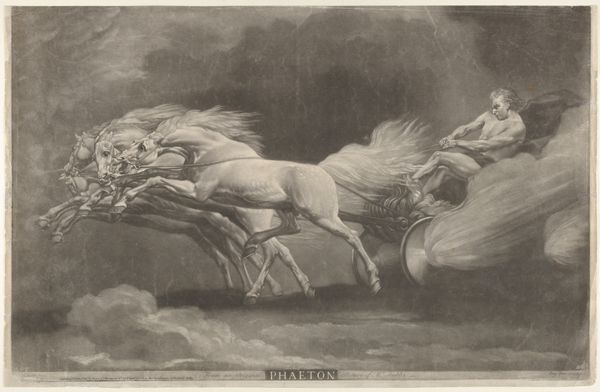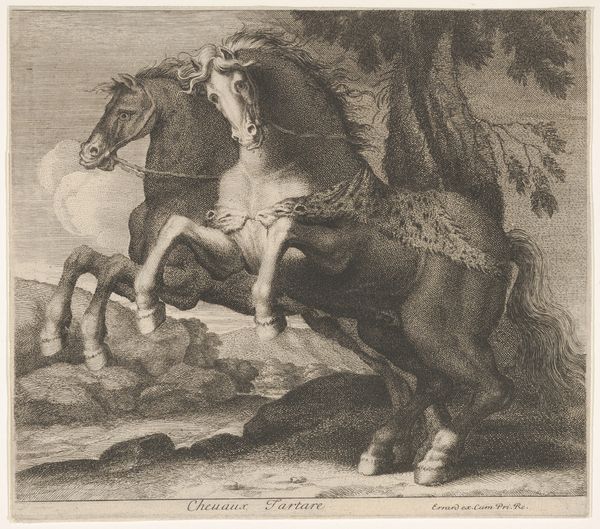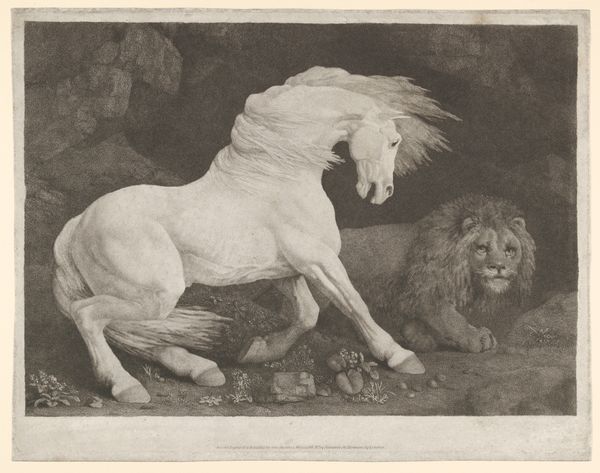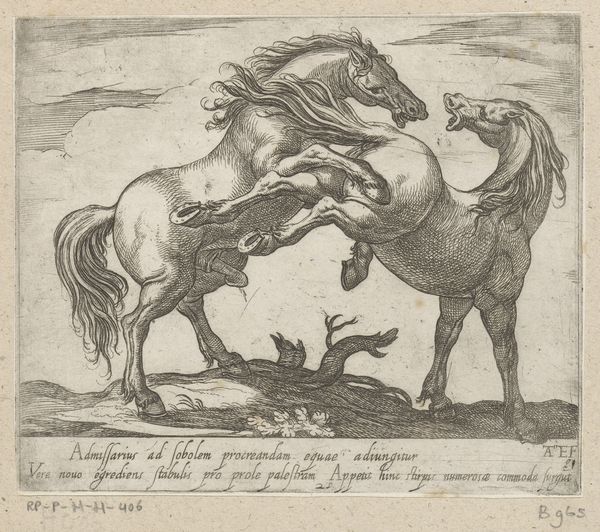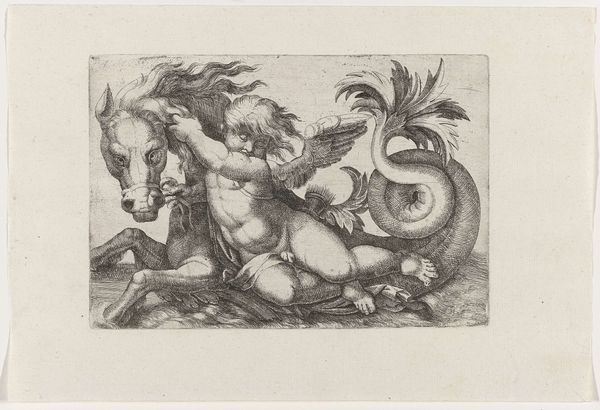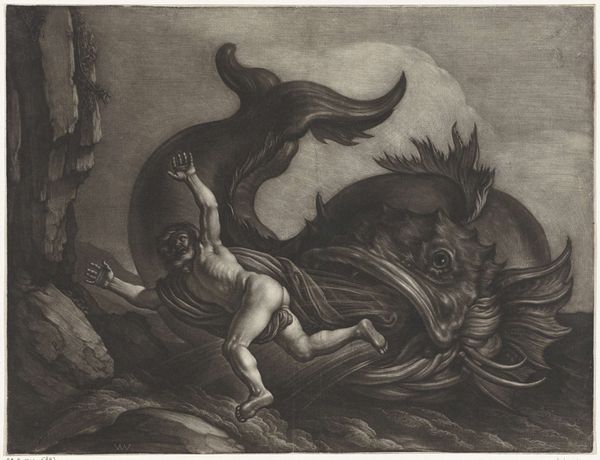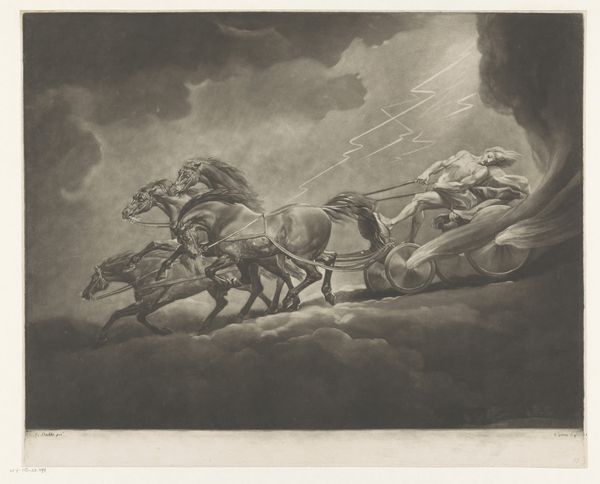
Dimensions: image: 250 x 335 mm
Copyright: CC-BY-NC-ND 4.0 DEED, Photo: Tate
Curator: Immediately, this print strikes me as incredibly violent, but the scene is undeniably dramatic. Editor: This is George Stubbs's "A Horse Attacked by a Lion," also known as "A Lion Devouring a Horse." Stubbs, born in 1724, was renowned for his anatomical accuracy in depicting animals. Curator: It’s fascinating how Stubbs captures the raw power of the lion versus the horse's desperate struggle. Is it a comment on power dynamics, perhaps? Editor: Absolutely. Consider the social context: the Enlightenment's fascination with the natural world, colonial encounters, and the power imbalances inherent within those power structures. Curator: So, the image isn't just about nature; it's a reflection of broader societal hierarchies and the violence inherent in asserting dominance. Editor: Precisely, and perhaps the image provokes us to consider the ethics of human interactions with the natural world and with each other. Curator: I leave feeling like this print is more than just an animalistic depiction—it's a potent symbol. Editor: Yes, it continues to resonate, prompting us to question the enduring themes of power, survival, and the narratives we construct around them.
Comments
tate 7 months ago
⋮
http://www.tate.org.uk/art/artworks/stubbs-a-horse-attacked-by-a-lion-a-lion-devouring-a-horse-t03843
Join the conversation
Join millions of artists and users on Artera today and experience the ultimate creative platform.
tate 7 months ago
⋮
In 1769, Benjamin Green had engraved and published a mezzotint version of this subject, simply entitled The Lion and Horse. Green’s print and this later soft-ground etching by Stubbs both show the third episode in Stubbs’s narrative: when the lion has leapt on to the horse’s back and sunk its teeth into its withers. However, the landscape background in this print is quite different from the earlier one. It is thought to be based on an unlocated enamel, although the composition is also close to the Tate enamel, shown to the right. Gallery label, September 2004
